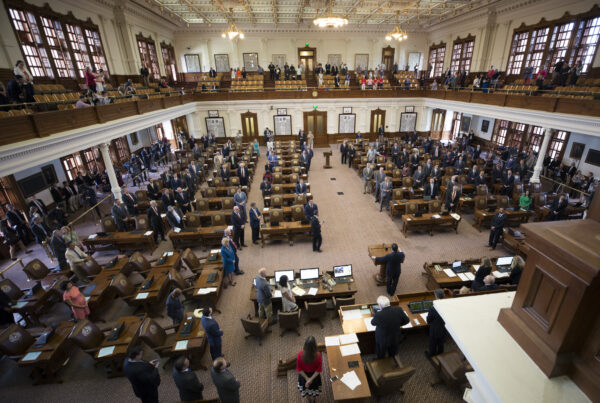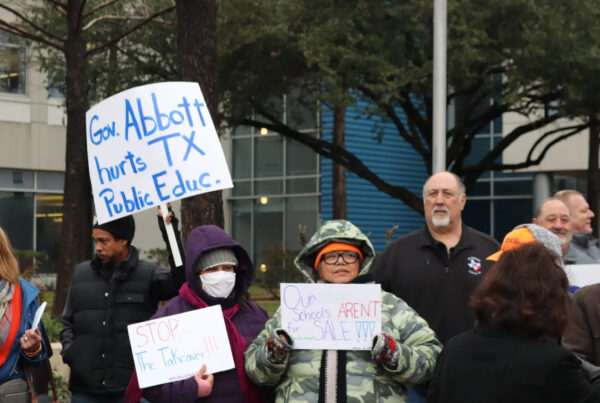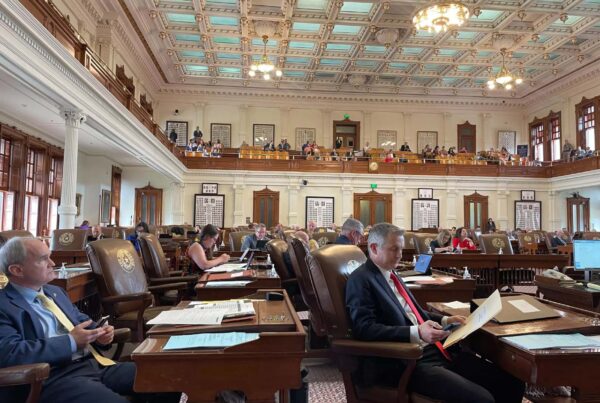One of the business community’s biggest goals for this legislative session was to make sure that lawmakers approved some sort of economic incentive program to help lure businesses to Texas.
The state’s previous program, known as Chapter 313, expired in December. Companies like Samsung, Union Carbide and Phillips 66 have all used the program in recent years to reduce their property tax burden in exchange for bringing jobs to Texas.
And after a full session of haggling, it wasn’t clear whether a replacement would get passed. At the 11th hour, however, lawmakers reached a compromise. Nathan Jensen, a government professor at the University of Texas at Austin who studies incentives and economic development, spoke to the Texas Standard about the new program.
This transcript has been edited lightly for clarity:
Texas Standard: So at the 11th hour, I understand, lawmakers reached some sort of compromise on a new incentive program. What are the key differences between this new program and the old one?
Nathan Jensen: Well, it’s easier to tell you the similarities than the differences. You know, there’s a wild roller-coaster where we ended up where we started. You know, this program is, as you noted, a 20-year-old program that was criticized for giving tax breaks to companies that were largely coming anyways. And it’s done through the school finance system, and that structure is still in place. I think there’s a few differences, and one of the big difference is that renewable energy projects – wind and solar – are no longer part of the program. And I think that’s the biggest change.
I understood that it was smaller, but it sounds like what took one of the most significant hits was an effort to try to draw more renewable energy companies to Texas.
Yeah, and there was a very large number of applications for renewable projects in the previous program, but they tend to be smaller than the oil and gas. So it’s easy to see the number of projects, but the dollar amount was still dominated by the petrochemical industry, and then some of the big chips manufacturers as well.
So does this fix some of the problems that critics saw in the previous program, in your opinion? Sounds like not, if it sort of mirrors the old one.
Yeah, I think it mirrors the old one. I think the one positive note is that there’s real clarity that the comptroller is responsible for these applications. So they do have a veto over any project that looks like it would have been coming anyways. So I think, you know, whether they use that veto or not, I’m not sure. But there is a real clarity of responsibility, right? It is on their watch. And if they fail, right, we know exactly who to blame. And I think that was a structural problem with the previous program.
You know, there the structural problems, and then there’s something else that sort of amounts to overpromising and under-delivering, which seems to be a chronic issue. Is there any way to police that better, or no?
I think the problem is when you write the rules that it’s so easy to comply, it’s not about policing, right? It’d be one thing if companies promised 10,000 jobs and they didn’t deliver. But it’s another thing when a company only has to promise a handful of jobs. So they’ll deliver on their promises – it’s just, the promises are are very small.
So if you really want a program that creates jobs, you should incentivize per job or have a higher job standard. This program doesn’t have that. So I don’t know if it’s so much policing as, you know, unfortunately, just a poorly written economic development program. Again, if your goal is to attract new business to Texas, this is a pretty ineffective tool.
Well, just how important are these kinds of programs to state economies? And I guess Texas, in a sense, is an outlier because so many businesses have been moving on their own.
Yeah, you know, and I just looked it up: There’s 3 million small businesses in Texas. They don’t qualify for these programs. They don’t get these incentives. Sometimes they get city or county incentives. But the large percentage of companies in business in Texas don’t get these these incentives. And again, the criticism of the program is these are mostly companies that were coming anyways. So, you know, I think without 313, you wouldn’t really probably see almost any impact on the Texas economy.
Now, there’s other programs in Texas, workforce development programs – they have much better track records for economic development. But, you know, if we focus solely on this program, it’s mostly giving money to companies that were coming anyways.
313, of course, is the shorthand name for the state incentive program. So what is the trend? I mean, are states generally sticking with incentive programs to lure businesses, or is Texas following the herd here?
You know, there’s a real wide variation across states, I think. I don’t know if you remember this: Amazon searching for a second headquarters in 2017 – there was a real backlash right after Amazon HQ2, as we called it. And, you know, I think most of us thought that these programs at the very least were waning or, you know, at least were putting up more guardrails.
We’ve seen a real change this last year or two, where states have gone a bit crazy – in particular with the new chips plants and the new EV production – offering really, really deep incentives for these projects. So, you know, I think Texas looks pretty similar in a lot of ways to other states. There’s a lot of big projects out there, and they’re going all-in on these projects, even in ways that may, in the long run, really hurt the state.













